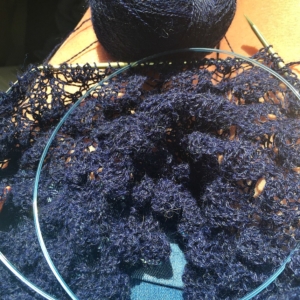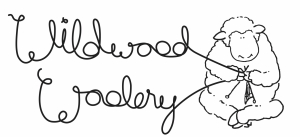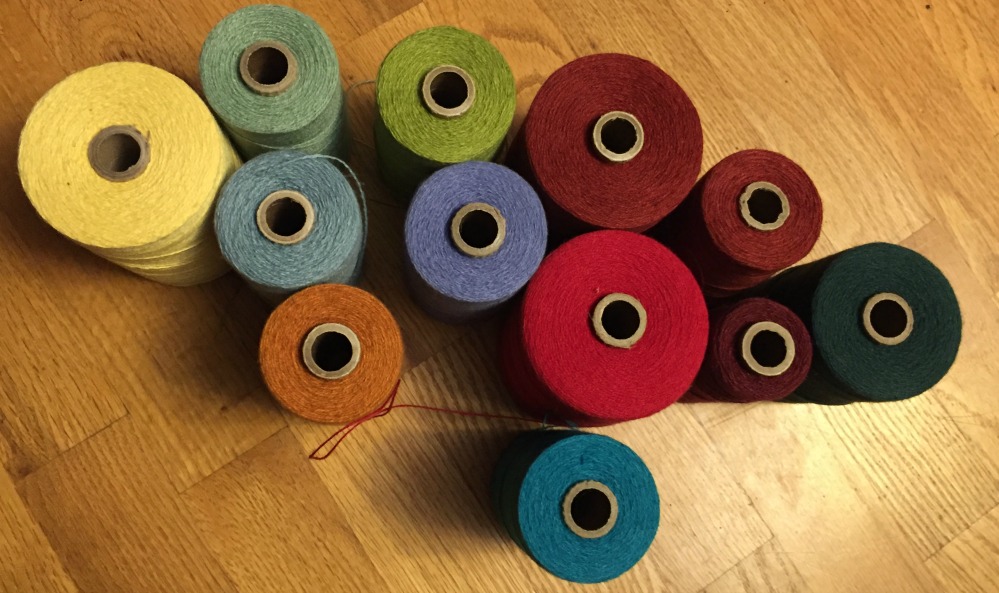I have always thought of grim persistence as a character strength, but sometimes it is a flaw. As we took off on our cross-country adventure, I packed a couple (ha ha) of projects – one with a deadline of a wedding. I cast on the first row as we were pulling off the island. In a brief moment of sanity, I even inserted a lifeline on my cast-on row. I thought it was for ease in picking up the stitches for the knit-on lace edging, but I may have had a flash of premonition.
Let me say at the outset that the pattern for this large scarf comes from a wonderful book from which I have already knit several items (Victorian Lace Today by Jane Sowerby). The instructions are clear and I like the results. I recommend it highly. The pattern is a true lace – all rows are pattern rows. Some folks find this more diffi cult because it requires one’s attention on every row, but I like it because you never have to back up more than one row if you make a mistake. Speaking of which…
cult because it requires one’s attention on every row, but I like it because you never have to back up more than one row if you make a mistake. Speaking of which…
I started knitting the pattern. As I knit along, learning the pattern, something felt wrong. The first repeat, I spent time figuring out how I wanted to do the left and right decreases, working on the rhythm of the pattern, and generally trying to get comfortable with the idea of doing 40 (a.k.a., an infinite number of) repeats. I worked out a scheme to keep track of my progress. (Side note: I am terrible at any technique that requires counting or making a mark at then end of a row. For some reason, I always lose track no matter how methodical my approach and intent. My stitch markers work for me.)
As we drove across Washington and into Idaho, the temperatures rose and so did my frustration. Despite repeated references to the pattern, my knitting simply didn’t look right to me. The logic of the stitches didn’t ring true. I kept thinking, “If I were writing this pattern, I would do it differently.” I thought about trying it the way I thought made more sense, but my dogged determinati on kicked in. I had already completely 4 repeats and I really wanted to continue to make progress. I would hold it up, shake my head, complain to my husband, and then keep knitting. Finally, between mountains, I had an idea. This was a popular book and I was sure that the pattern would have many examples on Ravelry – surely someone else would have posted an insight on their project page.
on kicked in. I had already completely 4 repeats and I really wanted to continue to make progress. I would hold it up, shake my head, complain to my husband, and then keep knitting. Finally, between mountains, I had an idea. This was a popular book and I was sure that the pattern would have many examples on Ravelry – surely someone else would have posted an insight on their project page.
And there it was. Right there on the pattern page itself. An errata – fixed in subsequent additions and plainly there for anyone to see if (ahem) they just looked. The minor corrections solved my problem and were exactly what I had been thinking right along. I felt vindicated and happy. Ripping the whole thing back to the beginning was an almost joyous experience. Now I am a quarter of the way done and the whole thing is going much more smoothly. I am 2 days behind schedule,  but I’ll either catch up or revise my schedule (we have days of driving still).
but I’ll either catch up or revise my schedule (we have days of driving still).
Did I learn anything? Oh yes, I did.
- Listen to my instincts. As long as I have been knitting, if I think something doesn’t feel right, I need to investigate beyond just re-reading the pattern. The more we knit, the more we get how things need to work. Respecting our knowledge and experience is a good thing.
- Check all my resources. Ravelry is an amazing resource and it improves all the time. It is a treasure trove of tricks and tips. Seeing what other people do and the problems they solve can only help me refine my own skills.
- Nobody is perfect and our book publishers are no different. Mistakes happen despite the best of intentions and the sharpest eyes. Lots of people knitting the same pattern usually results in refinements and improvements.
- Dogged determination, usually a positive trait, can make me too reluctant to stop, assess, and correct.
- There is nothing like a pattern that is working as intended – there really is a musical quality to knitting – a good pattern sings.
I’ll let you know when I am done. In the meantime, I am back on track, 11 repeats in, and we are all feeling the joy of the open road.








Leave A Comment